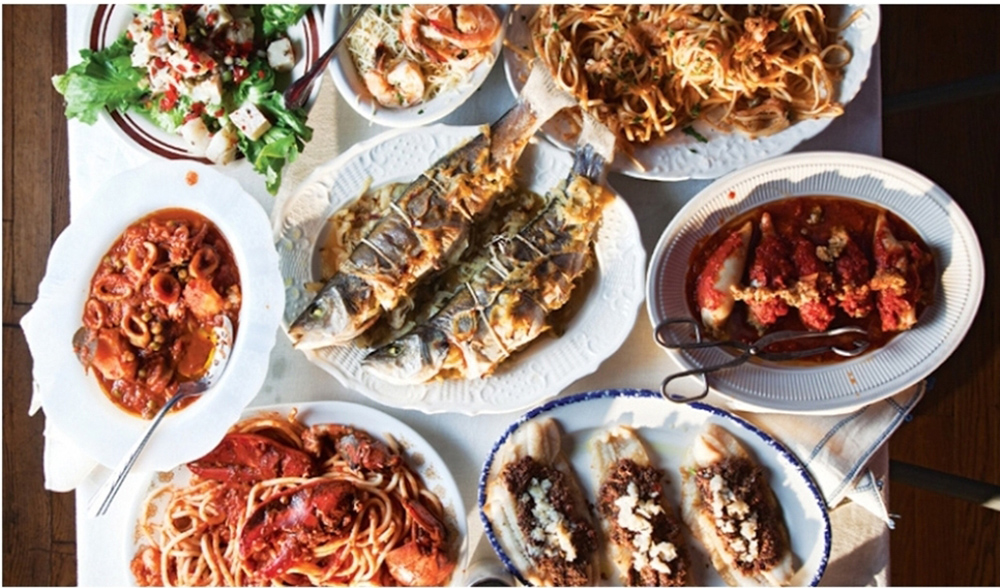By Chef Joseph Massaglia
Traditions are the fabric of our lives; at this time probably more so than ever. Feast of the Seven Fishes is an important part of my family’s Christmas celebration and all Catholic families around the world.
The ancient tradition of eating fish on Christmas Eve goes back to the Roman Catholic custom of not eating meat on certain holidays. According to multiple sources, the number seven for the seven fishes goes way back to ancient times and possibly relates to the number of days it took for the Creation, the number of deadly sins, and/or the seven sacraments to name a few. However, some people celebrate with up to 13 fishes to represent the 12 apostles and Jesus.
In my family it is a tradition that on the Eve of Christmas the main event is the gathering after the midnight mass to break our fast and enjoy the Feast of the Seven Fishes. We come home to celebrate the birth of Jesus with family and friends.
The feast can be seven courses, each with one fish represented, it can be several courses with more than one fish in each course, or there are even some people who do one big stew with seven or more fishes in it – but that is not done very often. However, no matter how you prepare the meal, you must have at least seven fishes represented.
Every region in Italy has its own way of preparing the Feast of Seven Fishes, and with 20 regions you can imagine the diversity. The people of the Southern region, which is known for its great variety and abundance of fish and seafood available to it, prepare the fish in many ways.
Traditionally they serve a first course of fried appetizers such as scallops, the famous smelts – those little fishes that are fried and eaten whole – calamari, shrimp and conch, also known as sea snail fritters.
For the second course, many people serve shellfish with pasta, preferably linguine, and include clams, mussels and sometimes conch with marinara sauce (marinara means “of the sea”). People in the south also use scarfano (or scorpionfish) and escraves (very large shrimp in their shells), both of which are abundant in the south.
The third course is usually salted cod (also known as baccalà) mainly done Livornaise style (from the city of Livorno, Italy), with garlic, capers, some black olives, scallions, plum tomatoes, parsley, anchovies and wine simmered in a seafood stock. This is a famous and a very popular dish.
If you’ve never had salted cod you’re missing a great treat. However, it is time consuming to prepare. You have to soak it many times to get rid of all the salt, which in ancient times was used to preserve the fish before refrigeration. If you don’t want to use salted cod in your recipe, you can substitute fresh Alaskan cod.
I grew up in Northern Italy, and we pretty much followed the southern style for our family feast, but we added carp (or river trout) to our dinner.
In Italy, gifts are not open on Christmas morning, but traditionally are opened on the Epiphany, January 6. So, if the kids have been good during the holidays they are going to get their gifts brought to them by the La Befana – the witch riding the broom. She comes down the chimney covered in soot, leaves the gifts, and then sweeps up the soot with her broom before she leaves. In America, we leave Santa Claus milk and cookies; in Italy we leave La Befana wine and a few bites of food.
My staff, family and I wish everyone a very Merry Christmas and a Happy and Healthy New Year.
Buon Natale!






